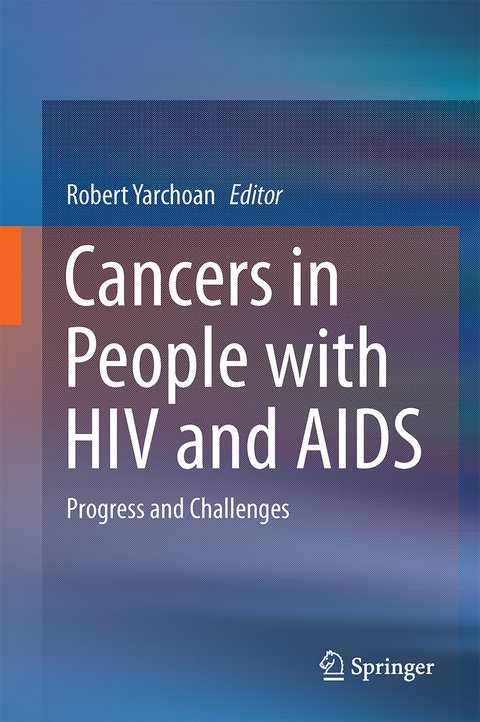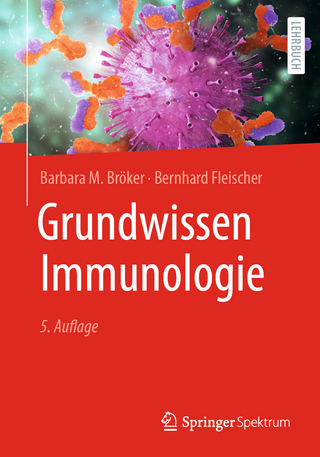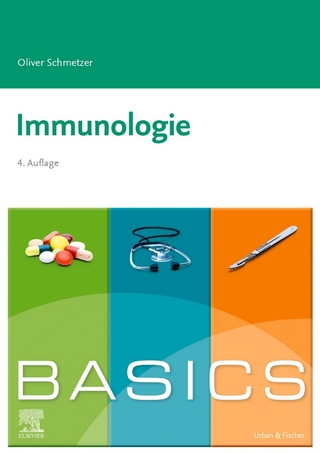
Cancers in People with HIV and AIDS
Springer-Verlag New York Inc.
978-1-4939-0858-5 (ISBN)
In recent years, there has been a vast increase in our understanding of HIV-associated cancers. We now know, for example, that most are caused by other viruses and that the main role of HIV and immunodeficiency is to provide a supportive environment for the viruses to multiply and for the cancers to develop. But there remain a number of unanswered questions and a need for improved prevention and therapy. In the 28 chapters of this book, written by some of themost renowned experts in this field, we present up-to-date information on the cancers associated with HIV infection. The chapters cover the epidemiology of these cancers, their pathogenesis, their clinical presentation, and their treatment. The book will be of value to physicians, other medical professionals, students, and researchers with an interest in AIDS, viral-associated cancers, or HIV-associated malignancies.
TABLE OF CONTENTS
1. HIV-associated Cancers: Overview
Robert Yarchoan, Thomas Uldrick, Mark Polizotto
2. Epidemiology of AIDS-defining Malignancies
William A. Blattner and Rebecca G. Nowak
3. Epidemiology of non-AIDS Defining Malignancies
Andrew E. Grulich
4. HIV Cancers in Resource-Limited Regions
Sam M. Mbulaiteye
5. Kaposi's Sarcoma-associated Herpesvirus (KSHV)
Blossom Damania and Dirk P. Dittmer
6. Epstein Barr Virus (EBV)
Lindsey Hutt-Fletcher
7. Human Papillomavirus (HPV)
Zhi-Ming Zheng
8. Merkel Cell Polymavirus (MCV)
Nicole Fischer and Adam Grundhoff
9. Presentation and Pathogenesis of Kaposi's Sarcoma
Corey Casper
10. Management of Kaposi's Sarcoma
Susan E. Krown
11. Presentation and Pathogenesis of HIV Lymphomas
Richard F. Little, Stefania Pittaluga, Kieron Dunleavy
12. Diffuse Large B-Cell Lymphoma
Neel K. Gupta and Lawrence D. Kaplan
13. Burkitt and Burkitt-Like Lymphoma
Kishor Bhatia and Sam M. Mbulaiteye
14. Primary Effusion Lymphoma
Giovanna Tosato
15. AIDS-related Central Nervous System Lymphoma
Jan Davidson-Moncada and Thomas Uldrick
16. Plasmablastic and Other Lymphomas
Huan-You Wang, Ida Wong-Sefidan, Erin Reid
17. Hodkin Lymphoma
Michele Spina, Rosanna Ciancia, Accursio Augello
18. Multicentric Castelman Disease
Mark N. Polizzotto, Thomas S. Uldrick, Robert Yarchoan
19. CervicalCancer
Elizabeth A. Stier
20. Anal Cancer
Joel Palefsky
21. Other HPV-Associated Cancers
Kristina R. Dahlstrom and Erich M. Sturgis
22. Lung Cancer in HIV Infection
Deepthi Mani and David M. Aboulafia
23. Hepattocellular Carcinoma in HIV-positive Patients
Massimiliano Berretta, Paolo De Paoli, Umberto Tirelli, Bruno Cacopardo
24. Merkel Cell Carcinoma and Other HIV-associated Skin Cancers
Nathalie C. Zeitouni adn Bethany Lema
25. Conjuctival Carcinoma
Kenneth O. Simbiri and Erle S. Robertson
26. Malignancies in Children with HIV Infection
D. Cristina Stefan
27. cART and Supportive Care
Ronald T. Mitsuyasu
28. Stem Cell Transplantation
Christine Durand and Richard Ambinder
Dr. Robert Yarchoan is the Director of the Office of HIV and AIDS Malignancy and Chief of the HIV and AIDS Malignancy Branch in the National Cancer Institute. He played a major role in developing the first AIDS drugs. His research is now focused on AIDS-related cancers, especially Kaposi sarcoma and other cancers caused by Kaposi sarcoma-associated herpesvirus.
HIV-associated Cancers: Overview.- Epidemiology of AIDS-defining Malignancies.- Epidemiology of non-AIDS Defining Malignancies.- HIV Cancers in Resource-limited Regions.- Kaposi's Sarcoma-associated Herpesvirus (KSHV).- Epstein Barr Virus (EBV).- Human Papillomavirus (HPV).- Merkel Cell Polymavirus (MCV).- Presentation and Pathogenesis of Kaposi's Sarcoma.- Management of Kaposi's Sarcoma.- Presentation and Pathogenesis of HIV Lymphomas.- Diffuse Large B-Cell Lymphoma.- Burkitt and Burkitt-Like Lymphoma.- Primary Effusion Lymphoma.- AIDS-related Central Nervous System Lymphoma.- Plasmablastic and Other Lymphomas.- Hodkin Lymphoma.- Multicentric Castelman Disease.- Cervical Cancer.- Anal Cancer.- Other HPV-Associated Cancers.- Lung Cancer in HIV Infection.- Hepattocellular Carcinoma in HIV-positive Patients.- Merkel Cell Carcinoma and Other HIV-associated Skin Cancers.- Conjuctival Carcinoma.- Malignancies in Children with HIV Infection.- cART and Supportive Care.- Stem Cell Transplantation.
| Zusatzinfo | 20 Illustrations, color; 14 Illustrations, black and white; XVI, 389 p. 34 illus., 20 illus. in color. |
|---|---|
| Verlagsort | New York |
| Sprache | englisch |
| Maße | 155 x 235 mm |
| Themenwelt | Medizin / Pharmazie ► Medizinische Fachgebiete ► Onkologie |
| Studium ► Querschnittsbereiche ► Infektiologie / Immunologie | |
| Naturwissenschaften ► Biologie ► Mikrobiologie / Immunologie | |
| Schlagworte | Cancer • HIV/Aids • Lymphoma • Malignancy |
| ISBN-10 | 1-4939-0858-8 / 1493908588 |
| ISBN-13 | 978-1-4939-0858-5 / 9781493908585 |
| Zustand | Neuware |
| Haben Sie eine Frage zum Produkt? |
aus dem Bereich


